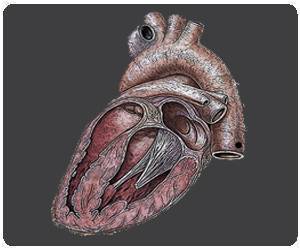- Postural orthostatic tachycardia syndrome and chronic fatigue in adolescents: Working toward recovery - Mayo Clinic - (https://www.mayoclinic.org/medical-professionals/clinical-updates/endocrinology/postural-orthostatic-tachycardia-syndrome-and-chronic-fatigue-in-adolescents)
- Postural Orthostatic Tachycardia Syndrome - Genetic and Rare Diseases Information Center (GARD), National Center for Advancing Translational Sciences, National Institutes of Health (NIH), USA - (https://rarediseases.info.nih.gov/diseases/9597/postural-orthostatic-tachycardia-syndrome)
- POTS Syndrome - Health Navigator New Zealand - (https://www.healthnavigator.org.nz/health-a-z/p/pots-syndrome/)
- Postural Orthostatic Tachycardia Syndrome (POTS) - Teens Health from Nemours - (https://kidshealth.org/en/teens/pots.html)
What is Postural Orthostatic Tachycardia Syndrome?
Postural Orthostatic Tachycardia Syndrome (POTS) is a circulatory disorder which occurs due to malfunction of the autonomic nervous system (ANS), technically termed as “dysautonomia”. POTS is characterized by low blood volume (hypovolemia) as well as a fall in blood pressure upon standing up, causing the heart to beat rapidly (tachycardia). Tachycardia helps to increase the cardiac output so that an adequate amount of blood is pumped into the circulation to maintain optimal blood flow in the blood vessels. POTS is often associated with Ehlers-Danlos syndrome and irritable bowel syndrome (IBS).
Origin of the Term "POTS"
The term “POTS” was coined by the neurologist Dr. Philip Low and his colleagues at the Mayo Clinic in 1993. It should be noted that POTS is nothing new and has been referred to at various times by various names. Some of these alternative names include chronic orthostatic intolerance, mitral valve prolapse syndrome, Da Costa’s syndrome, soldier’s heart, orthostatic tachycardia, neurocirculatory asthenia, and postural tachycardia syndrome.
Epidemiology of POTS
POTS can occur at any age, sex or race. It primarily affects females in the age-group 15-50 years. Approximately 80% of females are affected. The remaining 20% include males, including both men and boys. Therefore, the female to male ratio is 5:1. POTS can be precipitated by stressful conditions like sepsis, pregnancy, surgery or trauma. The prevalence of POTS is approximately 170/100,000 population. The mean age of onset in adults is approximately 30 years and ranges between the ages of 20-40 years.
What are the Causes of Postural Orthostatic Tachycardia Syndrome?
Although the exact cause of POTS is still being worked out, it is known that several diseases increase the likelihood of a person developing this syndrome. These include the following:
- Diabetes / pre-diabetes
- Systemic Lupus Erythematosus (SLE)
- Ehlers-Danlos syndrome
- Anemia
- Mononucleosis
- Lyme disease
- Sjögren’s syndrome
- Hepatitis C
- Multiple sclerosis
- Mitral valve prolapse
- Irritable bowel syndrome (IBS)
- Fiomyalgia

What are the Symptoms & Signs of Postural Orthostatic Tachycardia Syndrome?
The symptoms arise due to overworking of the heart in order to increase the cardiac output. Hence, these symptoms are associated with decreased perfusion pressure of the blood, often manifesting as a drop in blood pressure upon standing up. The major symptoms are briefly highlighted below:
- Heart palpitations
- Feeling faint or dizzy
- Lightheadedness
- Blurred vision
- Nausea and vomiting
- Excessive sweating
- Feeling hot or cold
- Chronic headaches
- Neck / back / chest pain
- Diarrhea / constipation
- Insomnia (lack of sleep)
- Trouble thinking or concentrating
- Weakness / tiredness
- Shortness of breath
- Anxiety

How do you Diagnose Postural Orthostatic Tachycardia Syndrome?
POTS is difficult to diagnose due to the wide variety of symptoms, which tend to overlap with each other. The various diagnostic tests include the following:
- Cardiovascular Tests:This involves measurement of heart rate and blood pressure in lying down (supine) and standing positions at 2, 5 and 10 minute intervals. Increase in heart rate above 120 beats per minute (BPM) within the first 10 minutes of standing is suggestive of POTS. Additionally, electrocardiography (ECG) or echocardiography are usually recommended to assess the heart condition.
- Quantitative Sudomotor Axon Reflex Test (QSART):Also termed as Q-Sweat test, this test measures the autonomic nerves that control sweating. The test involves electrical stimulation of the skin, which allows the neurotransmitter, acetylcholine, to stimulate the sweat glands. The QSART measures the volume of sweat produced by this stimulation. Thus, the test determines the integrity of the ANS, which is very important since any malfunction in the ANS can lead to POTS.
- Thermoregulatory Sweat Test (TST): This test measures the amount of sweat production when the patient is placed under special laboratory conditions where controlled temperature, humidity, and air flow is maintained. This is an important test for diagnosing certain disorders of the ANS that result in abnormal body temperature regulation and sweat production.
- Tilt Table Test: In this test, the patient is strapped-down on a table that is capable of rotating along its long-axis. The test starts off with the patient lying in a horizontal position. Then the table is slowly tilted until it reaches 90°. If the patient faints at this position, it may be concluded that he/she is suffering from POTS. It should be noted that this test must be carried out by an experienced cardiologist or a neurologist who has an in-depth knowledge of POTS.
How do you Treat Postural Orthostatic Tachycardia Syndrome?
Although POTS is not curable, it is treatable. There are several approaches that can help to alleviate the symptoms or keep them under control. These include the following:
- Medications: Certain types of medicines, which improve the heart function and treat blood pressure fluctuations can help to improve the condition. Some of these medications include low doses of β-blockers and vasoconstrictors to reduce blood pooling and increase venous return. Fludrocortisone can be used for salt and fluid retention. Selective serotonin reuptake inhibitors (SSRI) can be used for increasing blood pressure and intestinal motility. Other medicines for managing stress and anxiety may also be required.

- Diet: Increase in salt and water intake can lead to an increase in the blood volume. Therefore, consumption of salty food such as namkeens (salted snacks), pickles, seafood, and salads with dressing can be helpful. Moreover, the meals should be smaller in size but more frequent and evenly distributed throughout the day.
- Lifestyle: Proper planning of the daily activities is very important, particularly if the patient tends to become tired and run-down easily. Knowing when this happens is important for the patient. Using an automated pulse / blood pressure meter will help the patient to take timely preventive measures. Also, making a habit of wearing compression stockings is very helpful for managing the circulatory symptoms.
- Exercise: POTS patients cannot lead an active lifestyle or do strenuous exercise. However, light exercises like walking or light yoga can help to cope with the condition. Other exercises can be done, starting with sitting (rowing), followed by reclining (recumbent bicycling), and horizontal (swimming) positions. Moreover, postural training by a qualified physiotherapist can also be helpful.
- Sleep: Following a regular sleep regimen, which involves going to sleep and waking-up at the same time will be helpful for POTS patients.
What is the Prognosis for Postural Orthostatic Tachycardia Syndrome?
The long-term outlook or prognosis for patients with POTS is generally good, but may be poor in some cases. POTS symptoms may come and go and often follow a relapsing-remitting course, over a span of many years. However, the symptoms generally improve over time. In the majority (about 80%) of cases, the condition improves and the patient becomes functional, although some residual symptoms may still remain.










